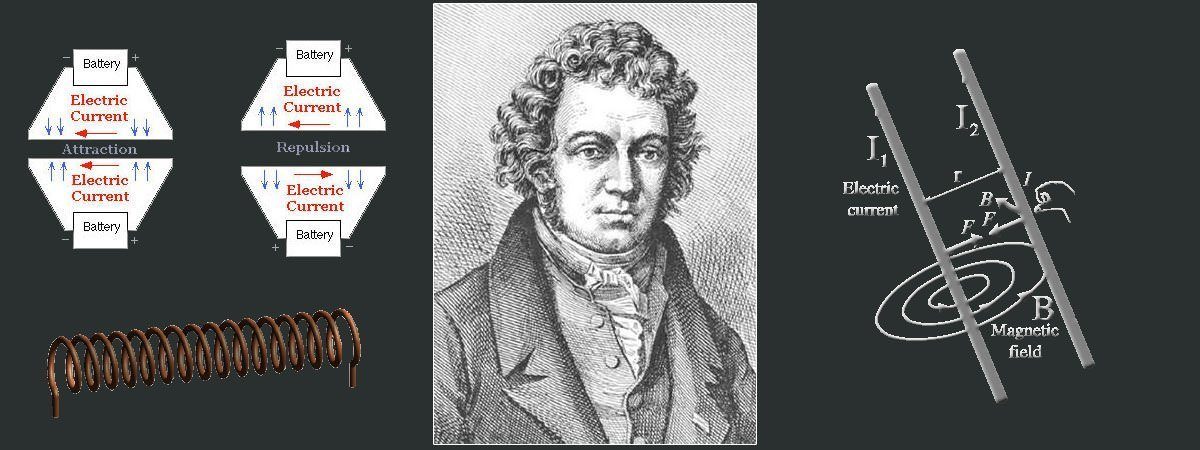Andre-Marie Ampere (1775 – 1836) was a French scientist and mathematician who is most famous for being one of the founders of the field of electromagnetism. Among other things, Ampere was the first to discover that magnetism could be produced without magnets; wrote the foundational test of electromagnetism; and formulated the Ampere’s force law. He also played a key role in the development of the galvanometer; and invented and coined a term for solenoid. Apart from his work in physics, Ampere also recognized the existence of the element fluorine and made an attempt to organize the elements into a periodic table. Know more about the work of Andre-Marie Ampere by studying his 10 major contributions to science.
#1 HE RECOGNIZED THE EXISTENCE OF THE ELEMENT FLUORINE
In 1810, Andre-Marie Ampere proposed that hydrofluoric acid was a compound of hydrogen and an unknown element, whose properties, he said, were similar to chlorine. He coined the term fluorine for this element and suggested that it could be isolated by electrolysis. It was 76 years later that French chemist Henri Moissan finally isolated fluorine. He did so by electrolysis as had been suggested by Ampere.

#2 HE IDENTIFIED THAT CHEMICAL ELEMENTS SHOULD BE ORGANIZED ACCORDING TO THEIR PROPERTIES
In 1816, Ampere proposed that chemical elements should be listed according to their properties. Only 48 elements were known at that time and Ampere tried to fit them in 15 groups. Though his attempt to form a reasonably accurate periodic table fell far short, he did successfully group the alkali metals, the alkali earth metals and the halogens. It was 53 years after Ampere’s attempt that Russian chemist Dmitri Mendeleev published his renowned periodic table.
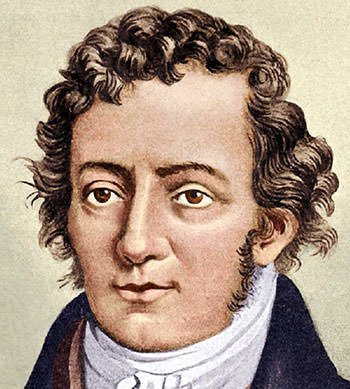
#3 HE DEVISED THE RIGHT-HAND GRIP RULE
In April 1820, Danish scientist Hans Christian Oersted discovered that a flow of electric current in a wire deflected a nearby magnetic needle. When Andre-Marie Ampere found this, he became engrossed in this new line of research. He worked out a rule, known as Ampere’s right-hand grip rule, to find the direction of deflection of a compass needle in relation to the direction in which the electric current flowed along the wire. In this rule, if the observer’s right hand is imagined gripping the wire through which the current flows, with the thumb pointing along the wire in the direction of the current. Then the fingers, curling around the wire, indicate the direction in which the compass needle will be deflected. Ampere’s rule is still used by students to calculate the direction of magnetic lines of force.
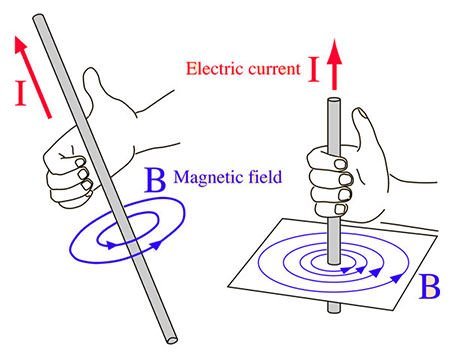
#4 He WAS THE FIRST TO DISCOVER THAT MAGNETISM COULD BE PRODUCED WITHOUT MAGNETS
Oersted found the first connection between electricity and magnetism in April 1820. In September of the same year, only a week after witnessing a demonstration of Oersted’s experiment, Andre-Marie Ampere discovered that two parallel wires carrying electric currents repel or attract each other, depending on whether the currents flow in the same or opposite directions, respectively. Ampere thus showed, for the first time ever, that magnetic attraction and repulsion could be produced without the use of magnets.
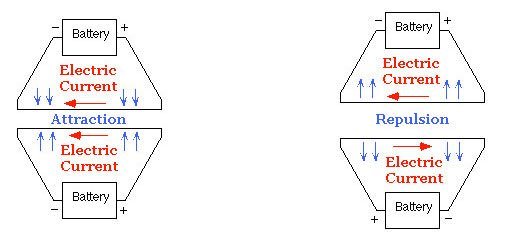
#5 HE FORMULATED THE AMPERE’S FORCE LAW IN 1823
Andre-Marie Ampere applied mathematics to his experiments with electromagnetism to formulate physical laws. The most important of these is called Ampere’s force law which he formulated in 1823. It states that the force of attraction or repulsion between two wires carrying currents is proportional to their lengths and the intensities of current passing through them. The physical origin of this force is that each wire generates a magnetic field. A few decades later, Scottish scientist James Clerk Maxwell extended Ampere’s law to formulate Ampere’s circuital law. Ampere’s circuital law is one of the famous Maxwell’s equations, which form the foundation of classical electromagnetism, quantum field theory, classical optics, and electric circuits.
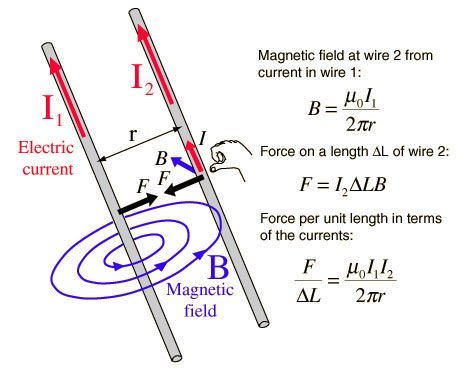
#6 HE PROPOSED AN ADVANCED THEORY EXPLAINING THE EARTH’S MAGNETISM
His research on electromagnetism led Ampere to propose that magnetism was produced by electricity in motion. Thus for the earth to act like a magnet, there must be currents circulating in it. Today we know that earth’s magnetic field is similar to that produced by a slightly angled magnetized bar. Scientists believe that macroscopic currents are at the origin of the magnetic field. The “dynamo” effect that generates these currents within the Earth, is currently an important subject of study.
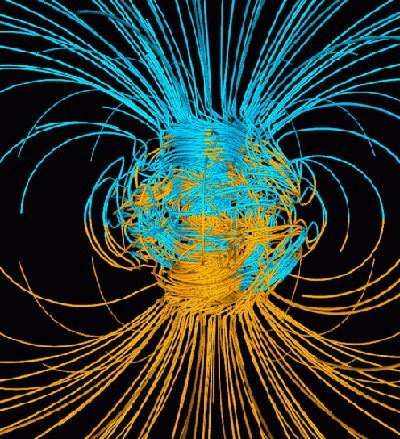
#7 he WROTE THE FOUNDATIONAL TEST OF ELECTRODYNAMICS
In 1826, Ampere’s work Memoir on the Mathematical Theory of Electrodynamic Phenomena, Uniquely Deduced from Experience was published. Among other things, it contained a mathematical derivation of the electrodynamic force law and described four experiments. Ampere thus coined the name electrodynamics for the new science. Today the term is used interchangeably with electromagnetism. Ampere’s memoir on electrodynamics is regarded as the foundational text in the field. It was hugely influential; and studied and discussed by physicists from Weber to Maxwell and beyond.
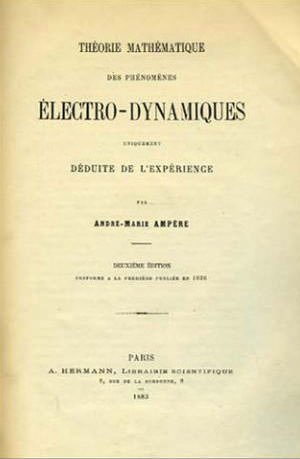
#8 HE THEORIZED THE EXISTENCE OF A PARTICLE SIMILAR TO AN ELECTRON
To explain the relationship between electricity and magnetism, Andre-Marie Ampere theorized the existence of a new particle he called an “electrodynamic molecule”. This may be thought as a forerunner to the idea of the electron. Ampere rightly believed that huge numbers of these microscopic charged particles were moving in electric conductors, causing electric and magnetic phenomena.
#9 HE PLAYED A KEY ROLE IN DEVELOPMENT OF GALVANOMETER
At the time of Ampere, there was no instrument to detect the presence and intensity of current in a battery. He used the deflection of the magnetic needle due to a current carrying wire to measure the flow of electricity. He thus played an important role in the development of galvanometer, an instrument for detecting and measuring electric current. Ampere was also the one to name the instrument after Italian physicist Luigi Galvani. Other contributions of Andre-Marie Ampere to physics include inventing and coining a term for solenoid, a coil wound into a tightly packed helix that acts like a magnet when a current passes through it.

#10 He IS REGARDED AS ONE OF THE FOUNDERS OF ELECTROMAGNETISM
Ampere produced a theory of electromagnetism that set the subject on a mathematical foundation. In recognition of his contribution to the creation of modern electrical science, an international convention in 1881 named the standard unit of measurement of electric current, the ampere, after him. For his immense contribution to the field, Andre-Marie Ampere is considered one of the founders of the science of electromagnetism. He was one of the most influential scientists of early 19th century.

